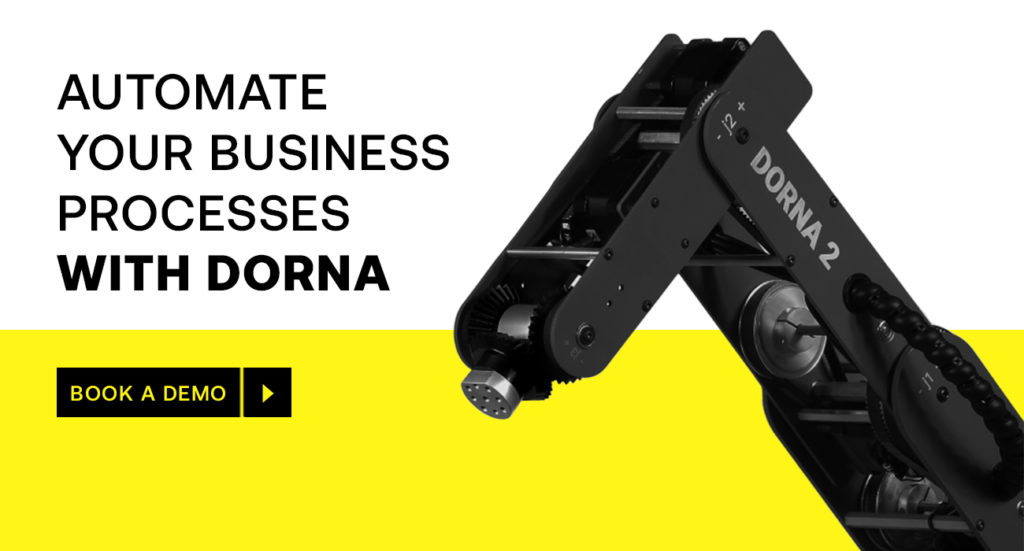Blogs
Pick and Place Robot: A Comprehensive Guide
This blog aims to explore the essence of pick and place robots, providing a comprehensive understanding of their components, operational…
30 minute read
In This Article
Today, robotic arms stand as the vanguards of efficiency and precision in the ever-evolving landscape of industrial automation.
These mechanical spectacles have become indispensable in modern industries, streamlining processes and amplifying productivity. And as we explore the core of this technological advancement, one cannot overlook the sophisticated 5-axis robot arms.
These cutting-edge robotic systems embody a paradigm shift in versatility, executing intricate movements that replicate the dexterity of the human arm. With applications spanning from manufacturing and assembly lines to the precision of intricate surgical procedures, their rising importance in today’s industries is undeniable.
The following blog explores the intricacies of 5-axis robotic arms, tracing the profound impact they have on reshaping the landscape of automation.
At the core of precision and adaptability, a 5-axis robotic arm emerges as the pinnacle of robotic engineering.
Simply put, it is a robotic system with the extraordinary capability to move in five distinct directions or axes. These axes, represented by X, Y, Z, A, and B, grant the robotic arm unparalleled flexibility in navigating its environment. Simultaneously, the basic structure, comprising articulated joints akin to the human arm allows for a diverse range of movements.
All elements of a 5-axis robot arm work in symphony to execute tasks with the remarkable precision it is recognized for. These can be categorized into three components:
Sensors, motors, and sophisticated control systems form the neural network of this mechanical limb, ensuring seamless coordination and responsiveness.
Each axis contributes uniquely to the arm’s spatial maneuverability – X, Y, and Z axes correspond to translational movements, while A and B axes facilitate rotational motions.
The end-effector, often equipped with various tools or grippers, represents the robotic hand, allowing these arms to perform a myriad of functions.
It is the synergy of these components and design that lays the groundwork for the versatility that defines 5-axis robotic arms in the realm of automation.
Analyzing the intricate movement of a 5-axis robotic arm reveals a characteristic precision in its actions, where each axis uniquely contributes to shaping its capabilities:
The X-axis governs the horizontal movement of the robotic arm, allowing it to traverse along a straight line. This is particularly crucial in tasks like pick and place operations, where the arm moves laterally to grasp objects from one location and transport them to another.
Complementing the X-axis, the Y-axis facilitates vertical movement. This upward and downward motion is instrumental in operations where the arm needs to adjust its height, such as stacking objects or reaching different levels on a shelf.
Completing the trio of translational movements, the Z-axis enables depth or forward-and-backward motion. This axis is essential for tasks requiring the arm to approach or retreat from a target, such as in precision machining or 3D printing.
The A-axis introduces rotational motion around the X-axis, providing the robot arm with the ability to tilt or pivot. This rotation is indispensable for applications like contouring, welding seams at varying angles, or accessing components from different orientations.
The B-axis, rotating around the Y-axis, complements the A-axis by offering additional tilt or swivel. This axis is particularly useful for tasks demanding a comprehensive range of motion, such as sculpting complex shapes or precisely orienting tools during intricate procedures.
Together, these axes coordinate movements that replicate the multidimensional capabilities of the human arm, providing the 5-axis robotic arm with unparalleled adaptability in navigating its surroundings.

The significance of a 5-axis robot arm’s versatility reverberates across industries, transforming it from a mere tool to a dynamic, problem-solving asset.
In an era where manufacturing landscapes are evolving rapidly, the ability of a robotic arm to move in multiple directions is paramount. Versatility, therefore, becomes the key to unlocking efficiency, allowing these robotic systems to tackle a spectrum of tasks with finesse. Whether it’s the precision required in intricate surgeries or the adaptability needed in assembling complex components, the capacity to move seamlessly along various axes ensures that no challenge is too formidable.
Additionally, versatility also contributes to the adaptability of entire production processes. The capability to perform diverse tasks with a single robotic system minimizes the need for specialized equipment, streamlining operations and reducing costs. This adaptability is particularly advantageous in industries characterized by rapid product diversification and changing production demands, where a 5-axis robotic arm becomes a versatile ally — capable of mastering a multitude of tasks with unparalleled proficiency.
The versatility of 5-axis robotic arms positions them as indispensable assets across a spectrum of industries, revolutionizing traditional processes and catalyzing efficiency gains. Some of these are:
Manufacturing industries have been quick to harness the capabilities of these robotic arms. Their ability to navigate along multiple axes makes them ideal for intricate assembly tasks, where precision is paramount. From electronics to consumer goods, 5 dof robot arms streamline production lines, reducing cycle times and enhancing product quality.
In the automotive sector, these robotic arms shine in tasks such as welding, painting, and assembly. The nuanced movements enabled by the five axes ensure that even the most complex components can be handled with ease, leading to improved manufacturing accuracy and speed.
In aerospace, where precision is critical, 5-axis robotic arms play a pivotal role. From machining intricate components to assembling delicate parts, these robotic arms contribute to the production of lightweight and aerodynamic structures, pushing the boundaries of what is achievable in aerospace engineering.
The healthcare industry benefits from the dexterity of 5-axis robotic arms in surgical procedures. With the capacity to move seamlessly in multiple directions, these robotic arms assist surgeons in performing minimally invasive surgeries, reducing patient recovery times and improving overall outcomes.

While 5 dof robot arms offer unparalleled versatility, challenges persist. Some of these are:
The intricate movements and versatility of 5-axis robotic arms necessitate complex programming. Skilled operators are essential to creating precise instructions, making it a challenge for industries to find and retain personnel with the required expertise.
Ensuring optimal functionality and preventing breakdowns requires a deep understanding of the intricate mechanics and electronics of 5-axis robotic arms. Specialized knowledge is crucial for maintenance tasks, making it challenging to find qualified technicians.
The need for specialized maintenance contributes to higher operational costs, as industries must invest in training programs and expert personnel to ensure the longevity and reliability of these sophisticated robotic systems.
Maintaining high safety standards is paramount, particularly in industries where human interaction is involved. Meeting safety requirements while maximizing the efficiency of 5-axis robotic arms poses a challenge, as it demands continuous adaptation to evolving standards and guidelines.
Streamlined programming and easy installation for non-experts, offering flexible setup with intuitive tools.
Ensures 24/7 operation with rigorous performance, guaranteeing long hours of hassle-free functionality without the need for regular maintenance.
Equipped with safety features such as novel braking mechanisms and sensors, making it safe for operation alongside human workers, preventing crashes and workspace damage.
Lowers operation costs and gives a return on investment in a matter of weeks, not years.

The future holds promising developments for 5-axis robotic arms. Evolving technologies, including artificial intelligence integration, adaptive learning algorithms, and enhanced sensor arrays, are poised to further augment their capabilities. As industries demand even greater precision and flexibility, these advancements will propel 5-axis robotic arms into new frontiers of efficiency and adaptability.
Book a demo with Dorna today to automate your business with the best 5-axis robot arms in the industry.
Solve your automation challenges with Dorna.
Blogs
This blog aims to explore the essence of pick and place robots, providing a comprehensive understanding of their components, operational…
30 minute read
Blogs, Products
Robots are steadily becoming part of various industrial processes, allowing humans to sidestep monotonous, hazardous, or demanding tasks. This blog…
21 minute read
Blogs, Products
Robotic arms, also known as manipulators, are versatile mechanical limbs that are programmed to perform tasks with unparalleled speed, accuracy,…
43 minute read
Blogs
Robot joints are the movable connections between different parts of a robot's body, much like the joints in humans. These…
39 minute read